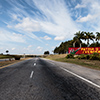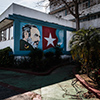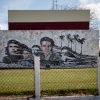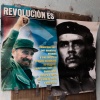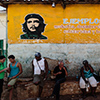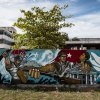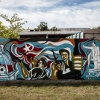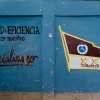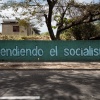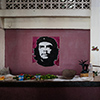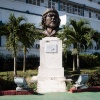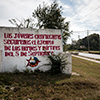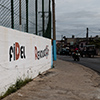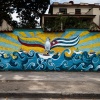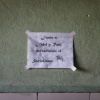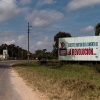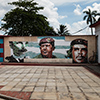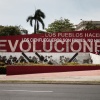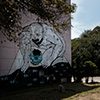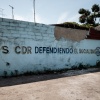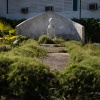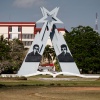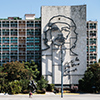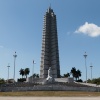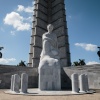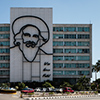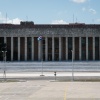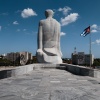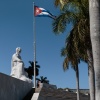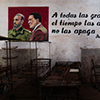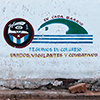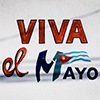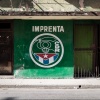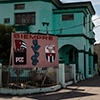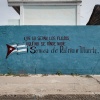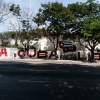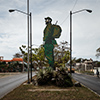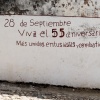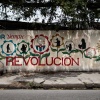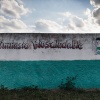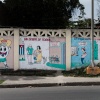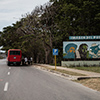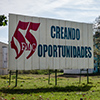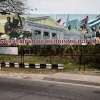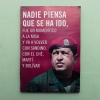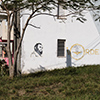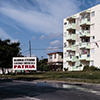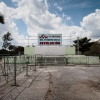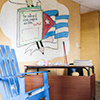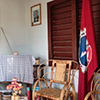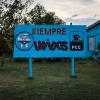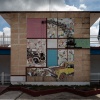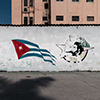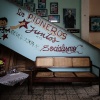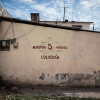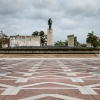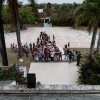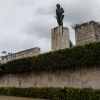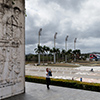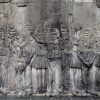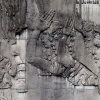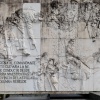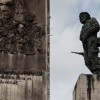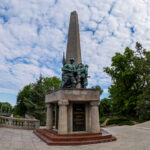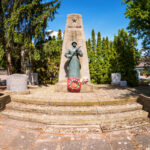Cuba between Rum, Revolution and Reforms
Rum and tobacco are more than only Cuba’s most important commercial goods. Both things are a mirror of the country’s policy and its major conflict that is resulting from the clash of two ideologies as Socialism faces the upcoming Neoliberalism. Cuba changes. Cuba opens up. Cuba discovers the world of money. Three reasons to capture the Cuban-Socialist iconography along my way as photo series and to get in touch with locals.
Rum makes the (Cuban) World go round
In the city of Pinar del Rio I bump into Jose, Maria and Benito; three neighbours that couldn’t have been more different in their characters as well as political point of view. Quickly we have a discussion directly next to the Guayabita del Pinar factory, where they sentence me to some rounds of high-proof pure rum. Here in Pinar del Rio the brown spirit matures in big and heavy oak casks after the rum distillate gets infused small guava fruits. Another great rum is the white Ron Mulata that comes with vanilla and apple-like fruit flavours.
At first we try the raw rum before it gets cut to 40% and bottled. It BOASTS with alcohol and lets my gums contract reflexively. To boot my teeth as well as mouth interior become instantly dull. Well, having tasted pure rum distillate it is hard to believe and appears like a biblical miracle that one day, after dilution and bottling, that stuff can be enjoyable though. Rum often comes in a dry (secca) as well as sweet form (dulce) and our rum somehow “improves” my Spanish and loosens the tongues of my Cuban fellows, who forget for a moment that free speech can result in repressions.
Economically rum and tobacco are the most important export goods for the Caribbean island. In tobacco industry working people like Benito pull the government and its system into pieces. Residing on their noble family haciendas, they perceive the forking out of 90% of their harvest to the state often as thievery. With the remaining 10% they are allowed to make business, what, in Cuban context, is a very good business in the end. Funnily enough it’s the farmers who decree what is 100%.
They would love to give in to the temptation of making serious dosh selling the whole harvest. The U.S. and its lifestyle is something desirable for them, what is no surprise, as the U.S. has the same showcasing character like West Germany once had for us East Germans. The craving for consumption, wealth and the American Way of Life is big in Cuba, what is nothing bad by itself.
Yet there are only few US Americans to be met in Cuba, what will surely change soon as both countries reapproach. On a tobacco plantation in San Luis I bump into five of those starry-eyed idealists “exporting democracy” all over the world. Their choice of words, the way they talk about Cuba, sounds precolonial, as if Cuba would be their property. Understandably they support the tobacco farmers in their whinging and perception that Communism is thievery. Well, living in a world of maximum exploitation, of McDonalds and Monsanto, they are indoctrinated that US things are good and right for the whole world. Places like Iraq surely can tell a thing about that, and what “mission accomplished” and democracy mean for the U.S.
“The strong support the weak!” ripostes Maria, who is of course a little “Communistically inoculated” as she works for the military. Sipping on her glass of urine-yellow rum liquor she bids defiance to the tobacco farmers’ whinging. “Somehow free health care and education must be financed! And that’s where rum and tobacco come into play.”
“Fidel and we lost friends, the Eastern bloc, that broke away in the 1990’s. Surely we made mistakes but in the 1990’s we were left alone being entirely isolated by U.S. sanctions. The shortage of everything and nowadays situation is a result of the USA foreign policy and not Communism!”
A historic Visit
The press praised the visit of Barack Obama to heaven high. Unfortunately the Cuban stopover of the Nobel Peace prize winner who never delivered what he promised (some people might understand such a behaviour as a lie) coincided with my travel, but fortunately I wasn’t in Havana at that time. Austrians told me that they got literally jailed into their hotel as windows got even boarded up with screws, not nails. Guard posts and check points everywhere. “So much about the free western world”, comments Maria, who sneers at Obama for not closing Guantanamo but criticising Cuba for holding political opponents in custody.
“Yes, there are poor people on Cuba, but everyone has access to very good health care and education, both being free of charge. After the terrible 1990’s also the supply with food runs much better now. If someone else tells you an opposite story or begs for money, then only because of base motives. Cuba has no street kids. That looks completely different in Central American countries being closer to the U.S. economically; for example Mexico, that suffers from free trade agreements”, proceeds Maria, whose award-winning smiles redeems her terrible blow-dry hairstyle that’s swaying left-right from her vivacious talking. What will Cuba’s future look like? Raul Castro, who’s the driving force behind Cuba opening up, is not the youngest anymore. Both forces, liberalisation as well as a Communist renaissance, wait in the wings.
Maria’s opinion is definitely not untrue. Many times the U.S. gave proof that their aggressive policy of sanctions and isolation were/are an inherent part of their foreign affairs. First they undermine other countries to easy the subsequent economical invasion. You only have to ask Iran, Iraq, Cuba, Chile, Nicaragua or Russia what that does look and feel like. In case of the Caribbean island the U.S. even interfered directly with countless attempts to murder Fidel Castro or the miserably failed Bay of Pigs Invasion. Also they supported the counterrevolution that started in the mountains around Trinidad.
Socialism, you can think about it what you want. Surely some of its approaches and intensions were/are wrong causing mistakes and I don’t want it back. However it was an interesting experiment and unique part of history. To hunt and capture its optical traces I hire a taxi driver. Different from Berlin, where every butcher, baker and candlestick-maker can use a satnav and steers a taxi (in the wrong direction), Cubans know their home off pat and show me the most magnificent murals and images of Socialist propaganda. Having witnessed the meticulousness and paranoia of how East Germany got liberated from Socialist icons, I ask myself, if and how this will happen to Cuba as well.
Striking is the cult of revolutionary icon Ernesto “Che” Guevara and Camilo Cienfuegos. Fidel on the other hand is obviously lesser part of murals and campaign posters; and if he’s shown then often together with comrades like Hugo Chavez or Nelson Mandela. In particular Che is omnipresent, as t-shirt, as bag, as magnet for the fridge back home. In Santa Clara, a city he conquered after two-day guerrilla combat, his mausoleum can be visited. The eternal revolutionary wasn’t active only in Cuba, but also in Congo, Guatemala and Bolivia. The latter country is where he got caught and executed without court decision in 1967 assisted by US-American CIA. That let him become a martyr, a worldwide martyr; you only need to remember the optical appearance and Che-reminiscences of the 1968 student movement.
In the end 56 years old Jose joins our discussion. He used to be a supervising instructor for maintenance and technics, but today pays his living from being a much better paid taxi driver. While jobs close to the government, like teachers, policemen and doctors get an average of some 20 CUC (=20 US$) per month, Jose can go home having earned ten times much. He profits from tourism and has a pragmatic approach to Cuba opening up. Personally it is more than fair that after years of international isolation we tourists become the key business for Cuba recovering financially.
All three conversationalists welcome the liberalisation though as Cuba will get an important new string in its bow, that is tourism. Against the background of having only 11 million inhabitants, the million tourists having visited the Caribbean island in main season so far appears like a sheer mass. It is not only a golden financial opportunity but also 10% more people in the country, hence a big challenge for Cuban infra structure. 8 o’clock in the evening is the primary arrival time for wide body airplanes coming from Europe. They quickly overtax the little Havana airport, thus I bump into AirFrance and AirEurope passengers waiting for their baggage some 3-4 hours.
Someone else calls the Tune
Puzzling over the chances as well as perils of a potential convergence with the U.S., someone else is already playing the first violin, that is China. Through and through the Middle Kingdom unpretentiously infiltrated the Caribbean island and became an inherent part of the country, in the form of commercial goods and household hardware. China goods are cheap and Cuba has only little money. Hence nowadays literally everything called goods comes from China, so do even the Zhengzhou-based Yutong busses being used by national transportation companies Viazul and Infotur/Transtur. I doubt the U.S. will ever catch up with that lead.
The Cuban conflict is not only Communism against Capitalism, but also the young against the elder and if you put flesh on this struggle then funnily enough it shows the Castro brothers. Fidel is a profoundly convinced Communist, who senses the perils of westernisation, but Raul is a pragmatist who absolute correctly recognised that Cuba’s revolution needs a revolution to develop further and persist in a globalised world, even if that means to face the risk of becoming pocketed by foreigners.
No matter where and when, money always corrupts and depraves the character. Sooner or later that will happen to Cuba as well. Nevertheless I am wishing the likeable Caribbean island to become no ward of liberalisation nor the U.S. Hopefully the liberalisation will result in a change towards the better, towards sovereignty and partnership at eyelevel. Raul’s method involves a symbiosis of liberalisation as well as a strong state, what I consider as the currently best way to cope problems.
However, “fantastic” U.S. American goods like liquid Cheddar cheese from the tube or food swollen with high-fructose corn syrup already wait disguisedly in the wings to ruin Cuba’s health and nutrition like it did in Mexico or the South Pacific, where the “protecting” power abused and still abuses its influence to flood the world with fast food at the very cost of Polynesians, who become even more obese than usual.
